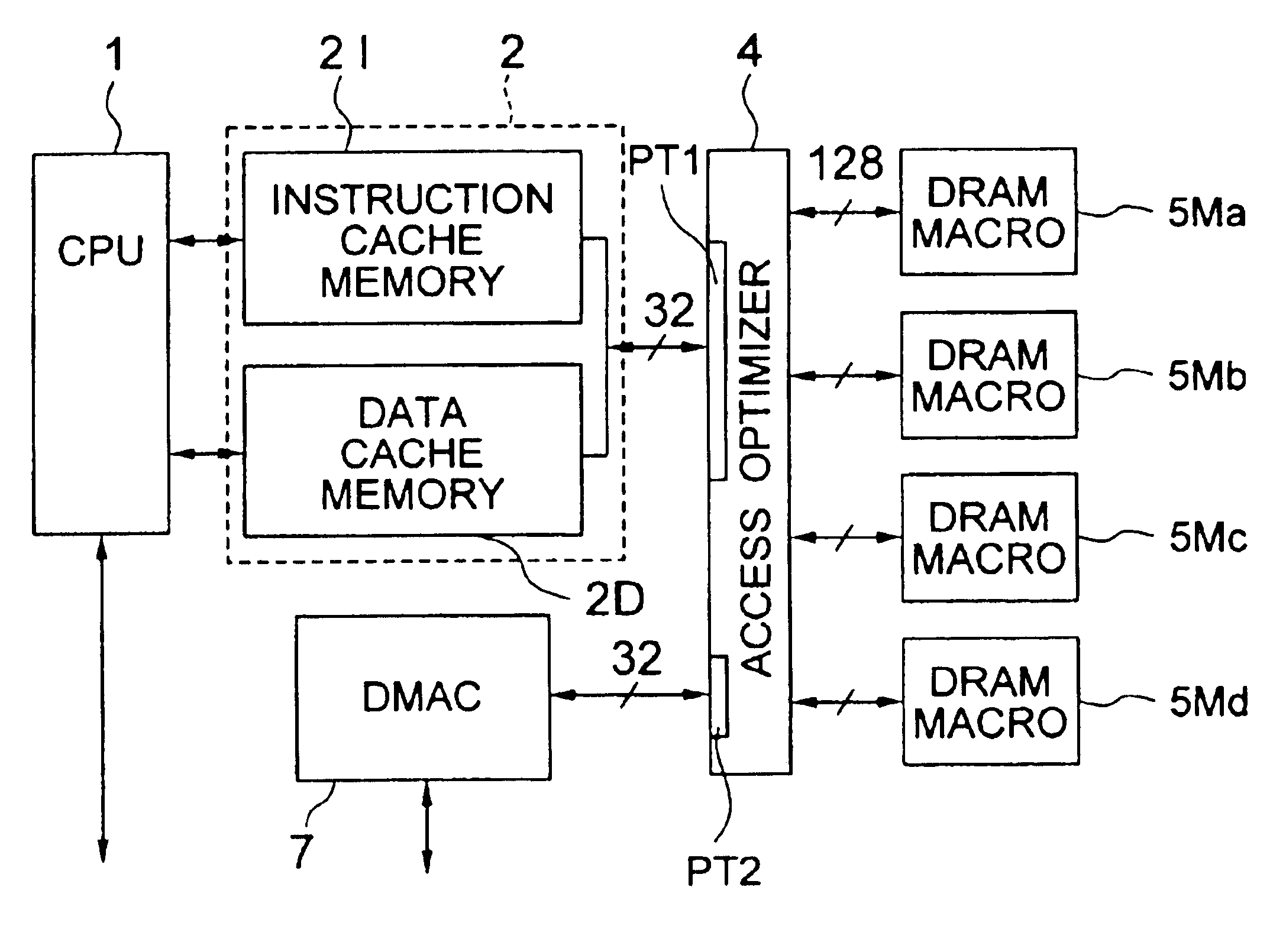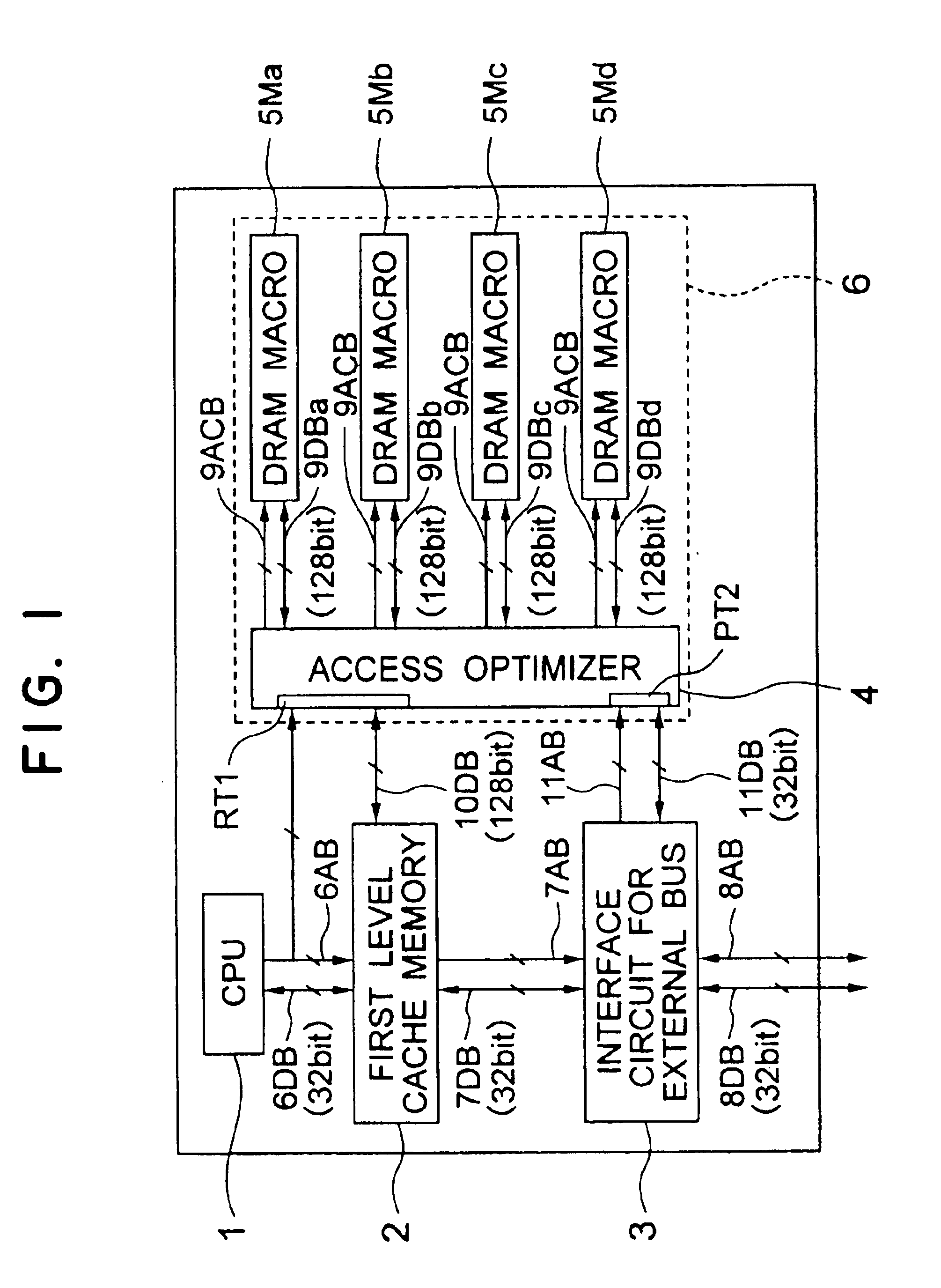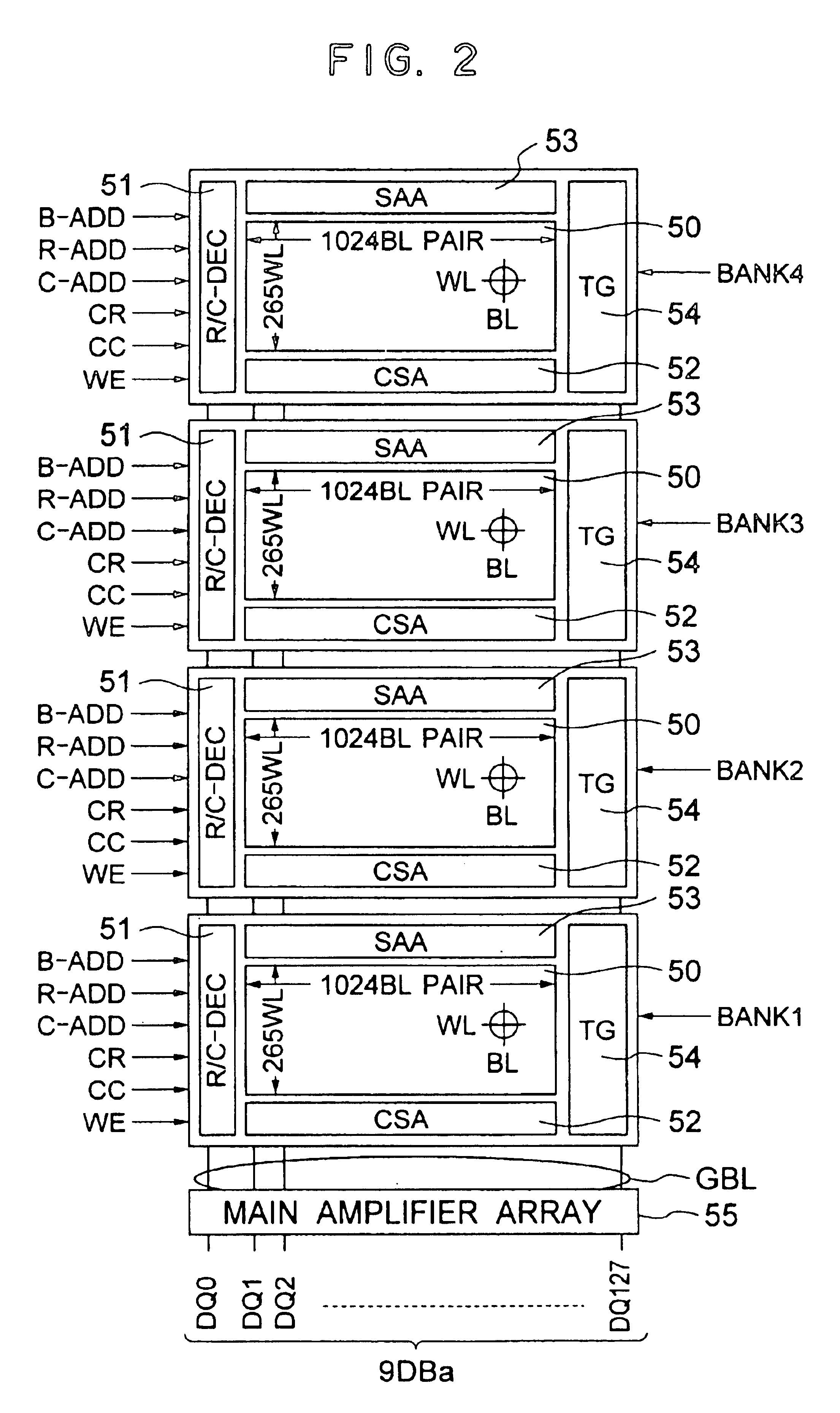Semiconductor integrated circuit and data processing system
a technology of integrated circuits and data processing systems, applied in the direction of digital storage, memory adressing/allocation/relocation, instruments, etc., can solve the problem that two operations cannot be efficiently performed by using different memory banks, and achieve the effect of improving the speed of first access
- Summary
- Abstract
- Description
- Claims
- Application Information
AI Technical Summary
Benefits of technology
Problems solved by technology
Method used
Image
Examples
Embodiment Construction
cting operation in the case where address spaces of the CPU are accessed sequentially when address alignment control is not performed as shown in FIG. 9;
[0051]FIG. 14 is an explanatory view showing a sequence of DRAM banks subjected to the word line selecting operation in the case where address spaces of the CPU are accessed sequentially when address alignment control is performed as shown in FIG. 10;
[0052]FIG. 15 is an explanatory view showing a sequence of DRAM banks subjected to the word line selecting operation in the case where address spaces of the CPU are accessed sequentially when address alignment control is performed as shown in FIG. 11;
[0053]FIG. 16 is a block diagram showing an example of a data buffer circuit;
[0054]FIG. 17 is a flow chart showing an example of a procedure for access priority judgment and for controlling an access operation based on the access priority judgment in the case where access conflict occurs in one and the same DRAM macro structure;
[0055]FIGS. ...
PUM
 Login to View More
Login to View More Abstract
Description
Claims
Application Information
 Login to View More
Login to View More - R&D
- Intellectual Property
- Life Sciences
- Materials
- Tech Scout
- Unparalleled Data Quality
- Higher Quality Content
- 60% Fewer Hallucinations
Browse by: Latest US Patents, China's latest patents, Technical Efficacy Thesaurus, Application Domain, Technology Topic, Popular Technical Reports.
© 2025 PatSnap. All rights reserved.Legal|Privacy policy|Modern Slavery Act Transparency Statement|Sitemap|About US| Contact US: help@patsnap.com



